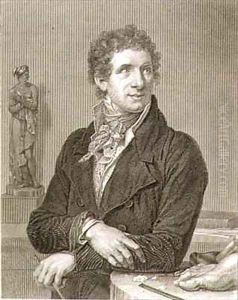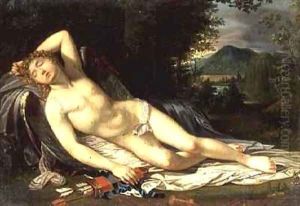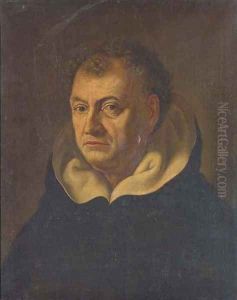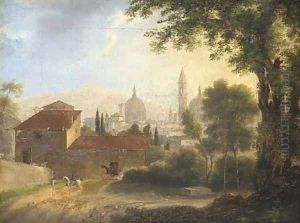Fabre, Francois Xavier Paintings
François-Xavier Fabre was a French painter born on April 1, 1766, in Montpellier. He was a prominent figure in the Neoclassical movement, which sought to return to the simplicity and purity of the arts of Rome and Ancient Greece. Fabre received his initial training in art at the Academy of Montpellier. He then moved to Paris to further his studies and became a pupil of Jacques-Louis David, who was the leading French painter of the era and a strong proponent of the Neoclassical style.
In the early years of his career, Fabre achieved success at the French Academy, winning the prestigious Prix de Rome in 1787 for his painting 'Death of Abel', which earned him a scholarship to the French Academy in Rome. His stay in Italy had a profound impact on his style, as he was deeply influenced by the art and culture of the Renaissance and the ancient world.
Fabre's time in Italy also coincided with the tumultuous period of the French Revolution. Choosing to remain in Italy during this time, he developed a close friendship with the poet and writer Vittorio Alfieri, which later led him to paint several portraits of Alfieri and his companion, the Countess of Albany. After Alfieri's death, Fabre became the Countess's advisor and confidant, which facilitated his introduction to influential circles of Italian society.
Throughout his career, Fabre was known for his portraits, which were highly regarded for their sensitivity and psychological insight. He also painted historical and classical subjects, landscapes, and was accomplished in creating miniatures. His works reflect a keen attention to detail, harmonious composition, and a subdued palette that was characteristic of Neoclassical aesthetics.
In addition to his painting, Fabre was a collector and art patron. He amassed a significant collection of art and artifacts throughout his life. After returning to Montpellier in the early 19th century, he donated his collection to the city, which became the core of the Musée Fabre, founded in 1825. The museum is still a major cultural institution in Montpellier, housing not only Fabre's works and collection but also offering a broad panorama of European art from the Renaissance to the present.
François-Xavier Fabre's legacy is that of an accomplished Neoclassical painter, a discerning art collector, and a generous patron. His contributions to the arts were recognized when he was made a Knight of the Legion of Honour. He died on March 16, 1837, in Montpellier, leaving behind a rich body of work that continues to be studied and admired for its clarity, refinement, and classical beauty.



